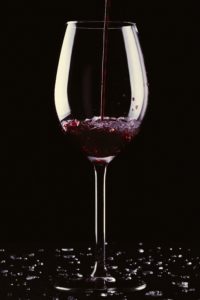Young Wine Consumers Scrutinizing Labels for Evidence of Sustainability
 With 84 million regular wine drinkers, the US wine market is the most populous in the world. The most frequent consumers are young, and of all the different categories of wine buyers, they are spending the most on high priced wines, choosing from a variety of styles that originate in many different countries and regions. As well as being more discerning and adventurous with their wine choices, these young buyers will go out of their way to buy from companies committed to the environment and are looking carefully at wine labels for evidence of social responsibility, ecologically sound practices and cruelty-free production.
With 84 million regular wine drinkers, the US wine market is the most populous in the world. The most frequent consumers are young, and of all the different categories of wine buyers, they are spending the most on high priced wines, choosing from a variety of styles that originate in many different countries and regions. As well as being more discerning and adventurous with their wine choices, these young buyers will go out of their way to buy from companies committed to the environment and are looking carefully at wine labels for evidence of social responsibility, ecologically sound practices and cruelty-free production.
Beyond the Label
While they are examining food and wine labels, 75% of consumers are also more likely to choose a brand that also gives more in-depth product information from other sources. They are looking for companies who are open about what’s in their products and the methods used to manufacture them. Although growing and producing wine is now starting to be officially certified as environmentally friendly, this confirmation of sustainability needs to be applied to the whole process, including transport and distribution, in order for the industry as a whole to be considered truly sustainable.
Eco-Friendly Logos
On Californian wine bottles, the sustainable logo introduced last year now informs consumers that the wine they are drinking is eco-friendly and has been produced using sustainable practices including energy conservation and the monitoring of greenhouse gases. However, although the USDA regulates the use of the term ‘organic’, other terms including ‘sustainable’ are not, as yet, legally defined. In addition, because different countries and wine regions have their own styles and conventions for wine labeling, it is still the consumer’s responsibility to become familiar with wine terminology and research the practices of individual vineyards before being certain that they are drinking a sustainable glass of wine.
Unfiltered Information
Although 73% of millennials are willing to spend more money on sustainable products, they are exacting in their demands. One of their criteria for a sustainable commodities is that they are produced without cruelty to animals. To verify wine meets this measure, the label should be checked for a sign that it is unfiltered. The filtering or ‘fining’ process removes tiny molecules from the wine in order to leave it clear but many of the ingredients used are derived from animal byproducts, thus making the wine unsuitable for vegans and vegetarians.
Today’s young consumers are becoming increasingly aware of the source of their purchases, and the ethical backgrounds and practices of the companies that create them. Looking closely at labels and understanding which claims can be trusted means that, as consumers, they can make better informed decisions about the wine they are drinking. As they are becoming more discerning when it comes to buying wine, they are happy to invest more in the sustainable practices that produce it. – By Sally Writes


Sorry, the comment form is closed at this time.